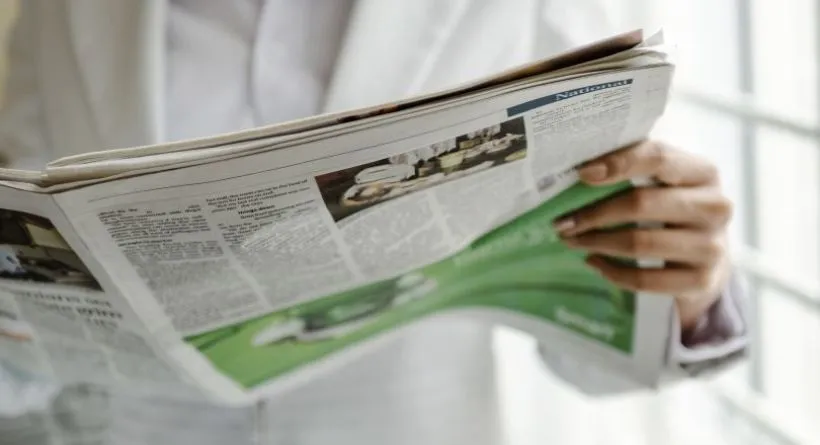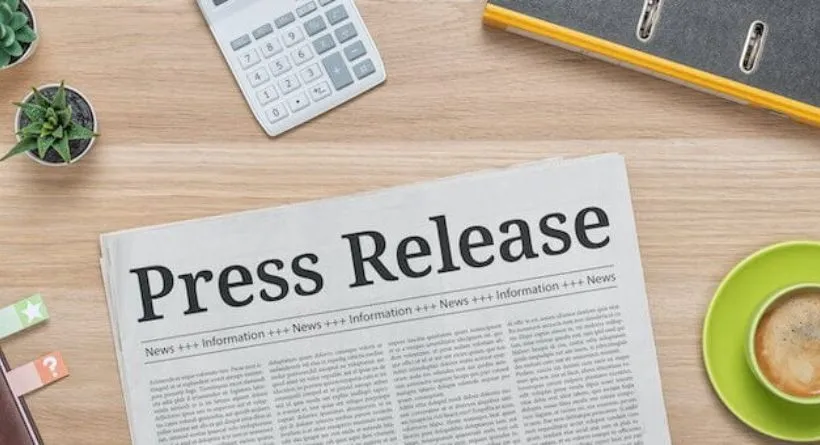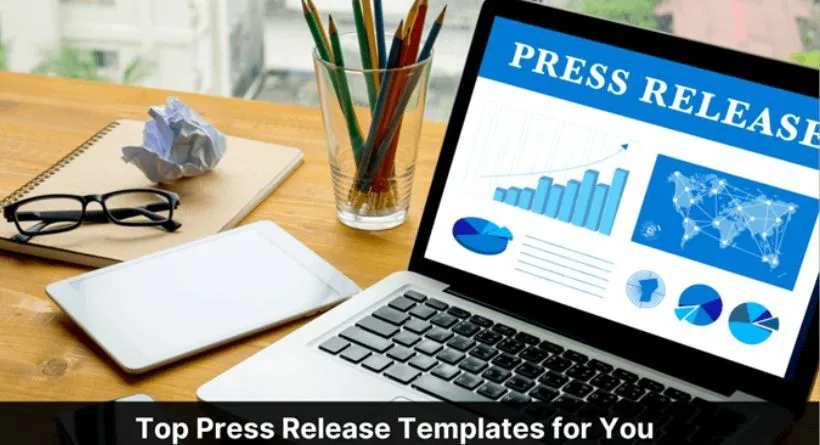Are you grappling with the enigma that is the press release format? Perhaps you’ve encountered the daunting task of trying to put together a compelling and effective press release, only to find yourself caught in the labyrinth of its structure and semantics. This problem is more common than you might think, and we want to reassure you – you’re not alone.
Our aim in this blog post is to provide a comprehensive solution to this issue, transforming the complex into the comprehensible. We will delve into the nuts and bolts of the press release format, giving you a step-by-step guide to help you navigate its intricate pathways. Our promise to you is not merely to highlight the problem but to equip you with a practical solution.
By the end of this read, the murky waters of press releases will start to clear. You’ll see that crafting a professional press release isn’t as daunting as it seems, much like solving a jigsaw puzzle – you just need to understand where each piece fits.
But first, let’s address the elephant in the room – the pain point. The press release, while seemingly straightforward, requires a nuanced understanding of its structure, tone, and intent. With this knowledge, you can craft a press release that not only gets noticed but makes a real impact.
Stay with us as we unravel the mystery of the press release format, turning it into an easily navigable map for your communications strategy.
The Press Release: A Primer
Let’s set the stage with a brief history lesson. The press release, a key tool in public relations, isn’t a new phenomenon. Ivy Lee, often credited as the father of modern PR, crafted the first press release back in 1906. His goal? To share truthful information about a Pennsylvania Railroad accident. Since then, the press release has evolved, adapting to technological changes and the digital landscape. But its core purpose remains the same: to communicate news-worthy information effectively and succinctly.
Also Read: The Best Business VoIP Providers and Phone Services for 2023
Why Press Releases Still Matter in the Digital Age
In today’s hyper connected world, you might wonder if press releases still hold any water. The answer is a resounding yes. The digital age has expanded the reach of the press release, not diminished it. Press releases now cater to a wider audience, spanning beyond journalists to customers, investors, and the general public. They help enhance your online presence, improve SEO rankings, and build brand credibility. So, contrary to popular belief, the press release isn’t an outdated relic but a dynamic tool that’s very much alive and kicking in the digital era.
Key Components of a Successful Press Release
A well-crafted press release is much like a well-prepared meal. It has several essential ingredients, each playing a crucial role. The headline, for instance, is the appetizer, whetting the reader’s appetite. It needs to be catchy and engaging. Next is the lead or introductory paragraph. This is the main course, offering the ‘who,’ ‘what,’ ‘when,’ ‘where,’ and ‘why.’ Followed by the body, which provides the details, acting like the side dishes that complement the main course. Lastly, the boilerplate and contact information are the dessert, wrapping up your press release nicely.
Understanding the Press Release Format
Dissecting the Press Release: A Detailed Look at Its Structure
Let’s get under the hood and look at the structure of a press release. It’s like a puzzle; every piece has its place and purpose. The headline grabs attention. The subhead line offers a quick summary. The date and location establish the context. The introduction presents the story. The body elaborates with quotes and data. The boilerplate provides a snapshot of your company, and the media contact details ensure the right people get in touch. Like a well-tuned orchestra, each part works together to create a symphony of clear, concise communication.
Examples of Good and Bad Press Releases
Picture this: two press releases. One, clear and engaging, quickly gets to the point. The other, cluttered and confusing, buries the lead. The first is an example of a good press release. It follows the format, delivers information effectively, and is easy to read. The second, a bad press release, lacks structure, is filled with jargon, and fails to deliver a clear message. The difference is stark, like night and day, highlighting the importance of adhering to the press release format.
Common Mistakes to Avoid When Writing a Press Release

Writing a press release isn’t a walk in the park. Mistakes can sneak in, like unwanted guests at a party. Some common pitfalls include burying the lead, overusing jargon, or failing to provide clear contact information. Remember, your press release is a bridge connecting your story to the world. Don’t let these common mistakes turn it into a roadblock. Stay tuned as we delve deeper into crafting a compelling press release, ensuring your message gets the spotlight it deserves.
How to Write an Effective Press Release
Embarking on the journey to write an effective press release? Fasten your seatbelt. It’s all about structuring your content strategically, much like building a house, brick by brick.
Also Read: Why CSGO Esports is most popular growing Industry in Asia? Know here!!
Crafting the Perfect Headline
The headline is your press release’s foundation. It’s the first thing readers see, so it must be impactful. Think of it as your elevator pitch. It needs to be concise, clear, and compelling. Use action words, include your focus keyword, and make it intriguing. Remember, it’s the gatekeeper of your press release, so make it count.
Writing a Compelling Introduction
Next, we move to the introduction, the doorway of your press release. It answers the 5W’s: who, what, when, where, and why. Your goal is to captivate your reader in this small space, compelling them to read further. A well-crafted introduction is like a good first impression—it sets the tone and piques curiosity.
The Body: Delivering Your Message
Now we reach the body, the living room of your press release, where your story unfolds. It’s where you delve into details, provide context, and support your points with data or quotes. Keep your paragraphs short for readability and your language simple for understanding. Treat the body of your press release as a narrative, guiding your reader through your story with clarity and interest.
The Boilerplate: Your Company’s Snapshot
Last but not least is the boilerplate, the backdoor to your press release. It gives a brief about your company—its mission, achievements, and where it stands in the industry. Picture it as a short ‘About Us’ section. It’s your chance to shine, so ensure it reflects your company’s persona in a polished, professional manner.
Demystifying the Press Release Format with a Free Template
Templates can be life-savers, especially when you’re navigating the world of press releases. They provide a blueprint, guiding you step by step through the process.
A Breakdown of the Press Release Template

Our free press release template follows the standard format. It has placeholders for the headline, introduction, body, and boilerplate. It’s like a jigsaw puzzle, each piece fitting in its place to complete the picture. Use it as a roadmap to structure your press release effectively.
How to Use the Free Press Release Template
Using the template is as simple as filling in the blanks. Start with your headline, then move to the introduction, the body, and finally, the boilerplate. It’s like following a recipe, adding each ingredient in the right order and quantity.
Customizing the Template to Fit Your Needs
But remember, a template is just a guide. Feel free to tweak it to suit your unique needs. Perhaps your press release needs an extra quote or a subheading. Go ahead and add it. Your press release should reflect your story and your voice. So while the template provides the outline, you fill in the colors.
In this section, we’ve traversed the path of creating an effective press release, offering tips and guidance along the way. With these tools in your toolkit, you’re well equipped to craft a press release that shines a spotlight on your story. Let’s continue this journey as we delve deeper into the art of press release writing.
Also Read: Get Free Business Cards: 5 Easy Ways in 2023
Conclusion
Like any art, mastering the craft of writing a press release takes patience, practice, and a keen understanding of the elements involved. We’ve journeyed together through the history of press releases, their relevance in today’s digital age, the key components, and the standard format. We’ve dissected its structure, learned from good and bad examples, and addressed common mistakes. We even provided a free template to ease your writing process.
Now, it’s your turn to apply this knowledge. Remember, every press release you write is a step towards perfecting your craft. Take your time, revisit the principles, and don’t be afraid to ask for feedback. Embrace the process, and soon, you’ll be crafting press releases that command attention and convey your message effectively.
Frequently Asked Questions
1. What is the primary purpose of a press release?
The primary purpose of a press release is to communicate news-worthy information to a targeted audience. It could be about product launches, company updates, or significant achievements.
2. How long should a press release be?
A typical press release is between 300 to 500 words. It’s long enough to provide essential information but short enough to retain the reader’s interest.
3. Can I deviate from the press release format?
The press release format is a tried-and-true guideline, but it’s not set in stone. Feel free to adapt it to suit your story and audience, but ensure the essential elements are included.
4. How often should I issue a press release?
The frequency depends on your company’s activities. However, it’s essential to maintain a balance. Too many press releases may lead to audience fatigue, while too few may result in lost opportunities to share key updates.
5. What makes a press release effective?
An effective press release is concise, clear, and compelling. It follows the standard format, includes all key components, and delivers the message effectively. It’s not just about what you say, but how you say it.

